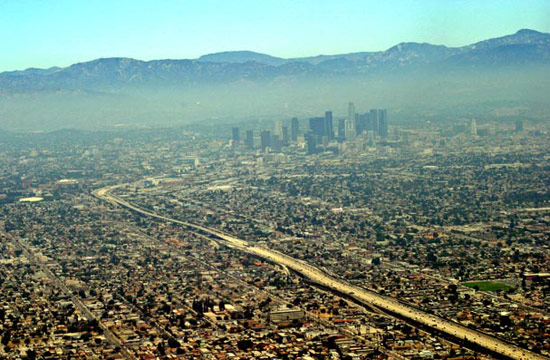temperature inversion

An inversion layer often forms over the city of Los Angeles, leading to smog and haze.
A temperature inversion is a condition of the lower part of the atmosphere in which the temperature increases with increase in height above the surface. Normally, temperature decreases upward through most of the atmosphere, the normal rate of decrease being 1°C (1.8°F) for every 160 meters (525 feet). However, in certain meteorological conditions this situation is reversed.
On a clear, calm anticyclonic night, the cool air may roll downhill and accumulate in valleys, and the air temperature will be lower near the valley bottom than it is 100 to 200 meters (328–656 feet) higher. Above the cold layer there will be warmer air, which is likely to form cloud or haze. Evidence f a temperature inversion can be seen if there is smoke rising from a bonfire. The smoke will rise vertically and then bend horizontally when it reaches the inversion layer. If this situation develops on a larger scale, dust and other particulates rising into the atmosphere are trapped and unable to escape, giving rise to serious pollution.


